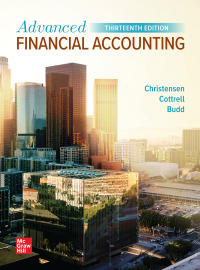


Peel Corporation purchased 60 percent of Split Products Company's shares on December 31, 20X7, for $216,000. At that date, the fair value of the noncontrolling interest was $144,000. On January 1, 20X9, Peel purchased an additional 20 percent of Split's common stock for $101,000. Summarized balance sheets for Split on the dates indicated are as follows: December 31 20x8 20x7 2009 Assets Cash Accounts Receivable Inventory Buildings & Equipment (net) Total Assets $ 46,000 53,000 74,000 345,000 $518,000 $ 76,000 93,000 104,000 325,000 $598,000 $ 96,000 123,000 164,000 305,000 $688,000 Liabilities & Equities Accounts Payable Bonds Payable Common Stock Retained Earnings Total Liabilities & Equities $ 53,000 105,000 155,000 205,000 $518,000 $103,000 105,000 155,000 235,000 $598,000 $ 143,000 105,000 155,000 285,000 $688,000 Split paid dividends of $22,000 in each of the three years. Peel uses the equity method in accounting for its investment in Split and amortizes all differentials over 10 years against the related investment income. All differentials are assigned to patents in the consolidated financial statements. Required: a. Compute the balance in Peel's Investment in Split Products Company Stock account on December 31, 20X8. Balance in investment account b. Compute the balance in Peel's Investment in Split Products Company Stock account on December 31, 20X9. Balance in investment account c. Prepare the consolidation entries needed as of December 31, 20X9, to complete a three-part consolidation worksheet. (If no entry is required for a transaction/event, select "No journal entry required" in the first account field.) view transaction list X: A Record the basic consolidation entry. > B Record the entry to amortize the excess value reclassification. Record the excess value (differential) reclassification entry. Credit Peel Corporation purchased 60 percent of Split Products Company's shares on December 31, 20X7, for $216,000. At that date, the fair value of the noncontrolling interest was $144,000. On January 1, 20X9, Peel purchased an additional 20 percent of Split's common stock for $101,000. Summarized balance sheets for Split on the dates indicated are as follows: December 31 20x8 20x7 2009 Assets Cash Accounts Receivable Inventory Buildings & Equipment (net) Total Assets $ 46,000 53,000 74,000 345,000 $518,000 $ 76,000 93,000 104,000 325,000 $598,000 $ 96,000 123,000 164,000 305,000 $688,000 Liabilities & Equities Accounts Payable Bonds Payable Common Stock Retained Earnings Total Liabilities & Equities $ 53,000 105,000 155,000 205,000 $518,000 $103,000 105,000 155,000 235,000 $598,000 $ 143,000 105,000 155,000 285,000 $688,000 Split paid dividends of $22,000 in each of the three years. Peel uses the equity method in accounting for its investment in Split and amortizes all differentials over 10 years against the related investment income. All differentials are assigned to patents in the consolidated financial statements. Required: a. Compute the balance in Peel's Investment in Split Products Company Stock account on December 31, 20X8. Balance in investment account b. Compute the balance in Peel's Investment in Split Products Company Stock account on December 31, 20X9. Balance in investment account c. Prepare the consolidation entries needed as of December 31, 20X9, to complete a three-part consolidation worksheet. (If no entry is required for a transaction/event, select "No journal entry required" in the first account field.) view transaction list X: A Record the basic consolidation entry. > B Record the entry to amortize the excess value reclassification. Record the excess value (differential) reclassification entry. Credit









